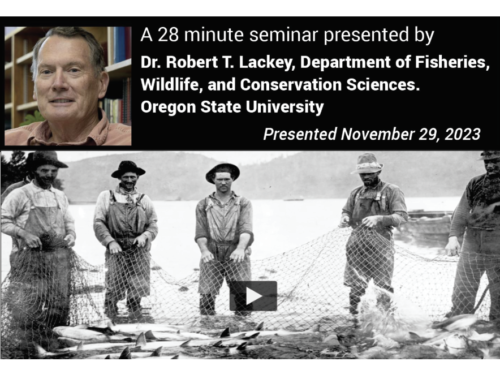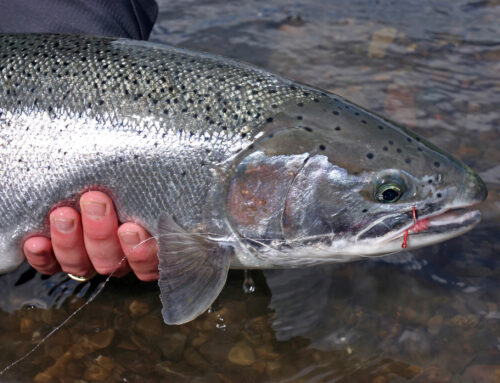A major voice in Western Washington’s salmon fishery management world says thatPatagonia’s new Artifishal movie is a “misguided documentary full of misinformation about the role hatcheries play in salmon recovery.”
Lorraine Loomis, chair of the Northwest Indian Fisheries Commission, adds that it doesn’t use “accurate science” to back up its claims that Chinook, coho and other stocks reared at state, tribal and federal facilities are the reason why wild stocks are declining, and because of that production at them must end.

LORRAINE LOOMIS, CHAIR OF THE NORTHWEST INDIAN FISHERIES COMMISSION. (NWIFC)
“What we know for certain is that eliminating hatcheries would be the end of salmon fishing for generations. More than half of all the salmon harvested in western Washington come from hatcheries,” writes Loomis in her monthly “Being Frank” column distributed around the region.
It comes as backers of the 75-minute movie screen it across the Northwest and elsewhere, and it appeared in early June at the recent Seattle International Film Festival.
I didn’t go see it, but an article in The Guardian describes it as not just about salmon production but also is “a swerve into the metaphyscial (sic), framing the salmon emergency as a question about the human soul, about what it needs – about what we need – to survive.”

But even as the movie “explores wild salmon’s slide toward extinction, threats posed by fish hatcheries and fish farms, and our continued loss of faith in nature,” Loomis writes that hatcheries not only produce fish for harvest, including tribes’ reserved by federal treaties, but help reduce pressure on weak stocks and serve as gene banks for imperiled ones, and that all facilities are operated with management plans to protect unclipped salmon.
The release of the movie comes as efforts ramp up to save Puget Sound’s orcas, which are suffering in part because there’s no longer enough Chinook for them to eat.
That’s in part due to massive habitat degradation, from the mountaintops all the way down to the estuaries, that has reduced waters’ capacity for adults to spawn and young fish to rear, but possibly also the longterm decline of releases of fin-clipped Chinook at particularly state facilities due to hatchery reforms and budget issues.
While hundreds of millions dollars’ worth of work is going on to bolster rivers and the inland sea for salmon, it will take decades if not centuries to really boost numbers of wild fish, time that the southern resident killer whales may not have and which means they’ll be dependent on robust, well-executed hatchery production for the foreseeable future.

A PUGET SOUND ADULT CHINOOK SALMON SWIMS THROUGH THE BALLARD LOCKS. (NMFS)
To that end, a Washington Fish and Wildlife Commissioner has called for the release of 50 million additional Chinook smolts.
Meanwhile, even as Loomis does find common ground over farming Atlantic salmon with the outdoor apparel company that’s made environmental issues a core concern, she disagrees that hatcheries are just like the floating sea pens.
“Patagonia could be doing a real service to the resource and all of us by advocating for habitat protection and restoration so that we are no longer dependent on hatcheries,” she states.
Instead, they appear to want to pick a fight on a bridge, burning it in the process.



